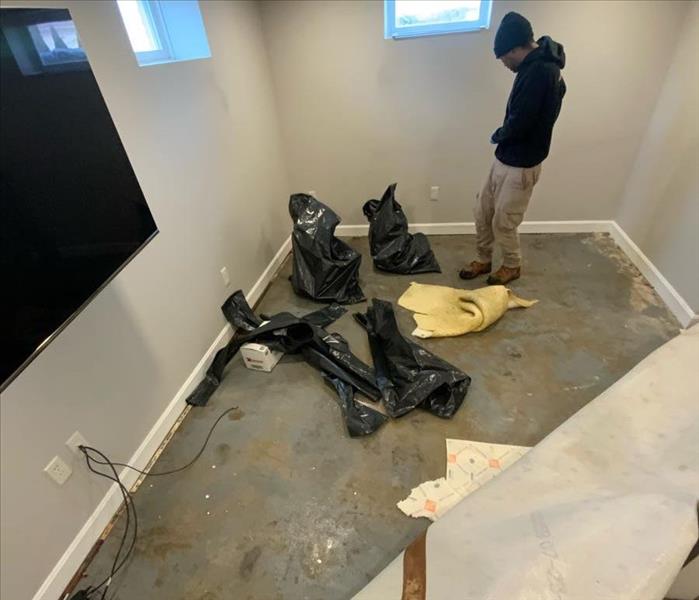Why you should remove your carpet and baseboards after your finished basement floods.
4/1/2024 (Permalink)
There are several compelling reasons why SERVPRO® might recommend removing carpet and baseboards after a basement flood:
Water Contamination: Floodwater often contains contaminants such as sewage, bacteria, and chemicals. Carpets and baseboards can absorb and trap these contaminants, posing health risks to occupants. Removing contaminated materials is essential to safeguarding the health and safety of individuals in the home.
Prevention of Mold Growth: Carpets and baseboards can retain moisture for extended periods, creating an ideal environment for mold growth. Mold can proliferate rapidly in damp conditions, leading to extensive damage and potential health hazards. Removing water-damaged materials promptly helps mitigate the risk of mold growth and prevents further contamination of the indoor environment.
Structural Integrity: Floodwater can saturate carpets and seep into baseboards, causing structural damage to underlying materials such as subflooring and drywall. Over time, prolonged exposure to moisture can compromise the structural integrity of the basement, leading to warping, rotting, and decay. Removing water-damaged carpets and baseboards allows for thorough drying and assessment of structural components, helping to prevent long-term damage.
Odor Removal: Floodwater can leave behind unpleasant odors that permeate carpets and baseboards. Even after drying, these odors may linger, affecting the indoor air quality and comfort of the home. Removing water-damaged materials helps eliminate odor sources and facilitates effective deodorization of the space, restoring a fresh and clean environment.
Efficient Drying: Carpets and baseboards can impede the drying process by trapping moisture and preventing airflow. Removing these materials allows for more efficient drying of the affected area, reducing the risk of secondary damage such as mold growth and structural deterioration. With proper ventilation and dehumidification, SERVPRO® can expedite the drying process and restore the basement to a safe and habitable condition.
In summary, removing carpets and baseboards after a basement flood is essential for mitigating health risks, preventing mold growth, preserving structural integrity, eliminating odors, and facilitating efficient drying. SERVPRO® understands the importance of swift and thorough mitigation measures in flood situations and recommends removal of water-damaged materials to ensure the safety and well-being of homeowners.

 24/7 Emergency Service
24/7 Emergency Service
